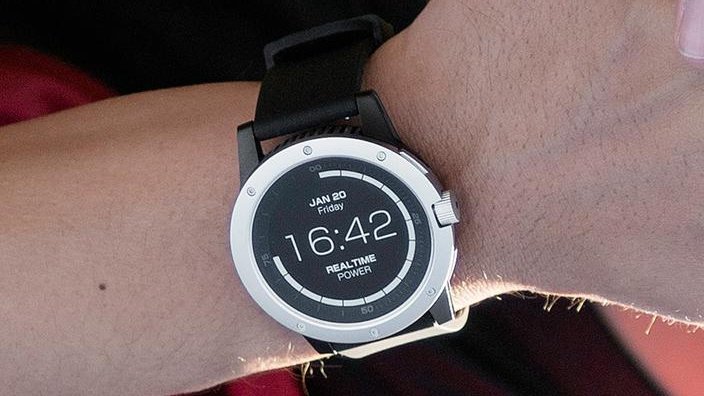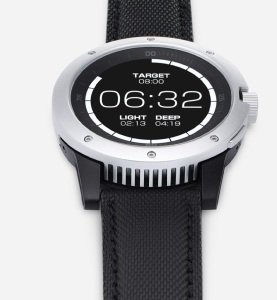
The Matrix Powerwatch 1 (also known as "OPW", Original PowerWatch, or Series 1) hit the market in 2018 and raised a lot of attention with a captivating tagline (“The world’s first smartwatch powered by you”) and the enticing promise of solving one of the most critical issues affecting smartwatches – the constant need of tethering to a charger to keep running.
After publishing the first part, this is the second part of the Definitive Review.
As discussed at the end of the previous post, Series 1 customers have been expecting a batch of new designs based on what the company had been suggesting for months, as well as the ability to create custom faces altogether; sadly, that never happened.
It is a watch, but really not a smartwatch
Matrix advertised the PowerWatch 1 as “the smartwatch powered by your body heat”. That is misleading, to say the least, because this timepiece has no smartwatch features: it does not have a heart rate sensor or a GPS, it does not (exception made for the X model) relay notifications, it cannot display mail or messages, and it cannot be extended with apps. It is also missing basic watch features: it does not have an alarm function, it doesn't automatically adjust for daylight savings, and (except the X) it cannot make sound or vibrate.
Any user of the standard edition or Black Ops should carefully set expectations.
Even the few watch functions are somewhat crippled: the stopwatch resolves time down to seconds, not 1/100th of a second. The same limitation applies to Running Mode, which also adds some of its own.
One activity is tracked, and only manually
Running Mode is a souped-up stopwatch that must be started and stopped manually as the Powerwatch does not have automatic activity detection. Its sole purpose is to collect running data that will be later displayed in the smartphone app after syncing.
No other activity is tracked by the watch, in stark contrast with other fitness trackers, including some of the cheapest wristbands from China.
Sleep Mode
Matrix touted in their promotional shots the capability to detect sleep states (such as light and deep sleep) and assess sleep quality. Nothing of that is available as Sleep Mode on Series 1 is just a sleep timer.
 |
|---|
| Light and Deep Sleep are AWOL. |
Even with the latest firmware updates, the experience is still not perfect as the watch doesn’t display cumulative sleep; if the user has slept seven hours from midnight to 7:00 AM and then a 30-minutes nap after lunch, the Sleep Time screen will show 30 minutes instead of 7 hours and 30. It’s hard to understand the reason why, as synced data will show the correct value in the app, proving the watch has all the information.
The worst part of it, from a health-tracking point of view, is that sleeping time is not configurable (unlike steps and calories) and is hardcoded to 8 hours in the companion app.
Data sync with smartphone
The user must pair the companion app with the watch before using it. This requirement has been a steady source of complaint from users on social networks as the initial pairing process had an unusually high fail rate with early firmware, and the watch simply can’t be used without. Things improved a lot with app and firmware updates, and pairing is now reliable thanks to the latest software.
The app is also providing the control panel to configure activity goals (steps, calories, and distance – but crucially not sleeping time), units (metric or imperial), display language, and watch face. If a new firmware is available, upon launch the app will show a notification pop-up inviting the user to flash the update.
Series 1 has a 7-days rolling window of storage and new information will overwrite the old one, therefore the user must sync with the app to collect and show all the data that have been recorded during operation (e.g. calories per day, sleep time per day, running times, steps and distance). Sync is a manual process initiated from the watch and requires the app to be open, and it can be performed anytime, but to preserve battery Matrix suggests doing it twice a week and not more often than once a day.
One relevant limitation that has never been lifted is that PowerWatch Series 1 doesn’t connect with Apple Health (or any other fitness framework, such as Strava or Google Fit). While not all smartwatches and health trackers are HealthKit compatible (e.g. FitBit), it always felt like a missing accomplishment. While not collecting a lot of activity data, Series 1 is even more limited as its data does not integrate with a wider ecosystem.
Known issues
Over time, long-term users have become accustomed to some well-known issues.
Watch lenses are prone to scratches, being made of "hardened plastic" (a.k.a. plastic), and can be too easily damaged by sharp objects or impact; to prevent that, it is highly recommended to install a screen protector, possibly made of glass (specific sizes exist for each PowerWatch). It is also possible to polish a scratched lens with high-grit wet sandpaper (from 1500 upwards) taking care of not scratching the aluminum bezel.
Black Ops and PWX anodized bezels can peel and chip away, just like an Apple iPhone 5 (or any other black anodized aluminum surface). They should be handled more carefully than the Original PowerWatch as their outside surface can be permanently damaged. The OPW "silver" aluminum body is known to be more resilient to wear and tear and may be a better choice for an active lifestyle.
PowerWatch X screws can get loosen. Unlike most watches, the PowerWatch X case is featuring actual metallic screws and washers that are tightened at the factory. It can be noticed that their assembly is oftentimes uneven, as the screws' heads have different orientations, and several users have reported that they may get loosen and even fall from the watch. To prevent that, it is recommended to check and tighten them up regularly; even better, open and fix them in place with a dot of Loctite (Threadblocker 242 is known to work well) before the problem arises.
PowerWatch X will chew your sleeves. The massive 50mm case is equipped with metal fins which, besides looking cool, maximizing TEG efficiency, and keeping the watch running, will also relentlessly bite into shirt sleeves fabric and sometimes pull threads away. OPW and Black Ops have a softer, rounder shape that is known to be way less aggressive with clothes.
Updates are likely over, but the latest is good
Ever since launch, there has been a lot going on with Series 1 firmware updates, and not all of it was good quality due to product management and development issues. For quite a long time, OPW and X had separate firmware images with mismatched feature sets (the most expensive X, curiously, being late and offering fewer features and less refinement for quite a long time).
The very first unified firmware was version 2.14, released in early December 2018, which unfortunately also introduced two major bugs: a display issue where skin and case temperature readings would randomly drop and stay to zero, and a much more serious battery drain which would exhaust the watch power reserve in a matter of weeks. The only solution to the latter was to recharge the watch on its USB-powered custom-made induction puck. As Series 1 did not include the puck in the box, however, in a pretty amazing showcase of customer satisfaction Matrix shipped it for free to any customer that requested it - no questions asked.
The power-drain bug was eventually resolved with the release of firmware 2.17 in mid-December 2019, almost one year after the previous version. The extended delay was caused by several factors, including frictions between Matrix Industries (based in California) and their manufacturing partner (based in Hong Kong), and the ongoing development of the new PowerWatch Series 2 which took place during 2019 and absorbed all company resources.
Firmware 2.17 is still the latest available at the time of writing, and likely the last update ever for Series 1 models. On the upside, it fixes both outstanding issues (the zero-temperature display and power drain bug) and other minor details, bringing all PowerWatch Series 1 models to a stable state where they can be reliably used as a daily driver.
Final thoughts
All things considered, this is the summary of what can be said after two years of ownership of the Matrix Powerwatch Series 1.
It’s no fitness tracker. The fitness tracking functions are not very accurate, and there is no integration with HealthKit or Google Fit. If you want something like a Fitbit, just buy a Fitbit.
It’s an enhanced watch, not a smartwatch. The PowerWatch X supports notifications, albeit with several limits, but all other models do not. (with a hack it was possible to flash a PWX firmware into OPW and Black Ops and obtain on-screen notifications, but that resulted in an unsupported - albeit mostly working - configuration).
There is no GPS, no heart rate monitor, and sleep tracking is really basic. In short, there are no smartwatch features, based on what users are accustomed to expecting, and even certain watch functions are limited or missing.
It actually never requires to be charged. After more than two years of uninterrupted operation and consistent feedback from many users it is quite safe to say that indeed, the PowerWatch Series 1 is a watch that charges with your body heat and never needs to be recharged. That is a remarkable engineering achievement and its most attractive feature.
In conclusion, the Matrix Powerwatch Series 1 works well, but it's a first-generation product and missing several things that were promised. So it is very important to correctly set expectations: it is a thermoelectric watch and never requires a charge. It has (subjectively) very nice hi-tech looks and stands off the crowd; at the same time, it doesn’t scream “uniqueness” so it has a subdued attraction, as the owner knows it is something very special and yet discreet.
As long as one can overcome its several limitations and shortcomings, the Matrix Powerwatch is a very interesting piece of technology that can actually be used as a wristwatch (with some, albeit limited, perks).
Last but not least: it was affordable if you could find one. While not falling into "pocket money" territory, and possibly not even "impulse purchase", it was possible (until stock lasted) to buy a PowerWatch Series 1 for as little as 99 USD (OPW), 119 USD (Black Ops), or 139 USD (PowerWatch X) directly from the manufacturer. All models went out of stock in 2020 during the COVID-19 pandemic and there is no indication when, or if, they will be available again for purchase.
If the lack of smart features is not a deal-breaker, that is a decent price for what is essentially a one-of-a-kind engineering masterpiece with mature firmware and a remarkable geek factor. Among all models, if its sheer size is not an issue the recommendation would be to choose a PowerWatch X as it supports notifications, which make it immensely more useful and much closer to an "actual" smartwatch; OPW and Black Ops are cheap entry points into the world of thermoelectric watches, and make for a very interesting collectible that can be used for many years to come.